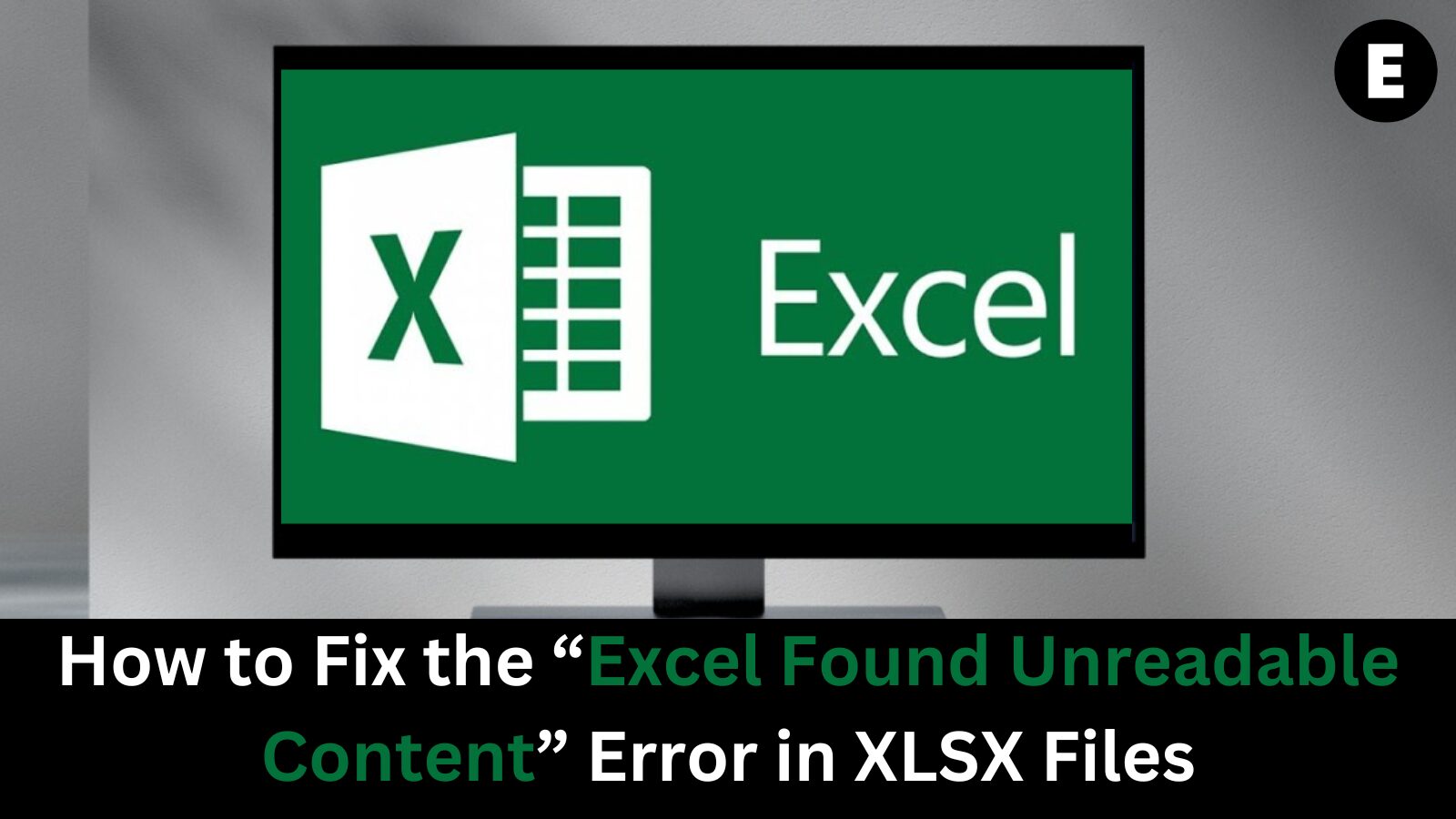Encountering the “Excel found unreadable content in [filename].xlsx” error can be alarming—especially when you’re working with important spreadsheets containing critical business or personal data. This issue typically arises when Excel detects file corruption or inconsistencies, which can prevent the file from opening or displaying content correctly.
But don’t worry—you can recover your data. In this guide, we’ll walk you through the most effective and proven solutions to fix this Excel error and restore access to your valuable information.
What Does the “Excel Found Unreadable Content” Error Mean?
The “Excel found unreadable content in ‘[filename].xlsx’” error appears when Microsoft Excel detects corruption or problematic content in a workbook you’re trying to open. The full message typically reads:
“Excel found unreadable content in ‘[filename].xlsx’. Do you want to recover the contents of this workbook? If you trust the source of this workbook, click Yes.”
What Happens When You Click “Yes”?
Upon clicking “Yes”, Excel will attempt to repair the file. Depending on the severity of the issue, one of the following outcomes may occur:
- Partial Recovery with Data Loss:
- Excel repairs the workbook by removing or altering unreadable parts (such as embedded objects or images).
- While the file may open, some content may be missing or changed, especially non-text elements like charts, formatting, or graphics.
- File Is Completely Corrupt:
- Excel displays: “The file is corrupt and cannot be opened.”
- In this case, the file is too damaged for Excel to recover, and you may need to use advanced recovery tools or previous versions.
Why This Error Happens
Common causes of this error include:
- File corruption from an unexpected shutdown or crash
- Issues during saving or transferring the file
- Incompatible Excel versions or faulty add-ins
- Faulty storage devices (e.g., bad sectors on a hard drive or USB drive)
How to Fix “Excel Found Unreadable Content in XLSX” Error
If you’re encountering the dreaded “Excel Found Unreadable Content” error when opening a .xlsx file, don’t panic. This issue is often linked to permissions, file corruption, or compatibility problems. Here’s the first fix to try:
Fix 1: Run Excel as Administrator
Sometimes, Excel needs elevated permissions to access or repair certain files. Running it with admin privileges can help bypass restrictions and fix the error.
Steps to Run Excel as Administrator:
- Right-click on the Excel shortcut or Excel.exe file (from the Start menu or Desktop).
- Select “Run as administrator” from the context menu.
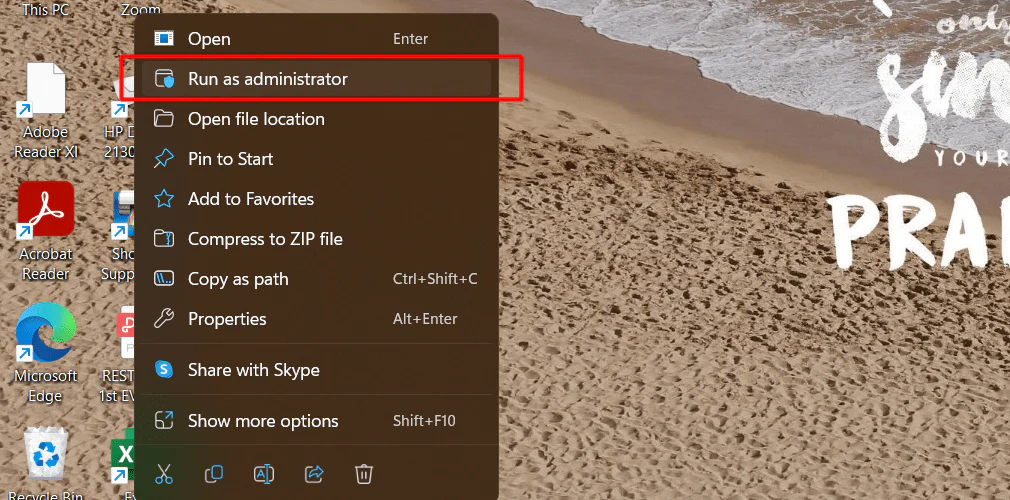
- When the User Account Control (UAC) prompt appears, click “Yes” to allow permissions.
- Once Excel launches, try opening the affected
.xlsxfile again.
Why it works: Running Excel with administrator rights gives it full system access, which can help open files stored in protected locations or needing special permissions to read certain elements.
Fix 2: Make the Excel File ‘Read-only’ and Transfer Data
Another approach to resolving the “Excel Found Unreadable Content” error is to set the file to read-only and then transfer the data to a fresh workbook. This helps bypass any corruption or issues that might be preventing Excel from accessing your file properly.
Steps to Make the Excel File Read-only and Create a New Copy:
- Open your Excel file and click on the “File” tab in the top left.
- Select “Save As” if it’s an existing document, or “Save” if it’s a new file.
- In the “Save As” dialog box, click on the “Tools” button (next to the “Save” button) and select “General Options” from the dropdown menu.
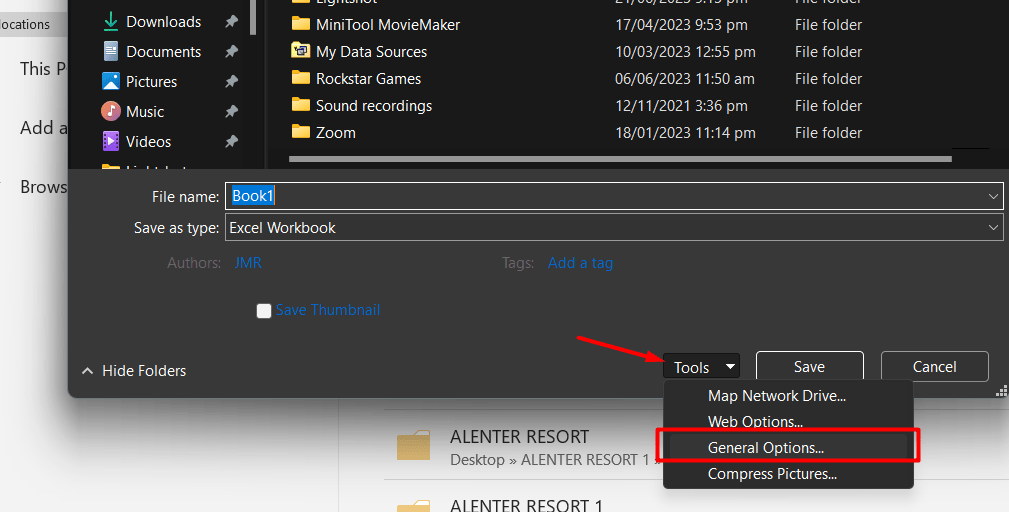
- In the “General Options” window, check the box labeled “Read-only recommended” and click “OK” to confirm the setting.
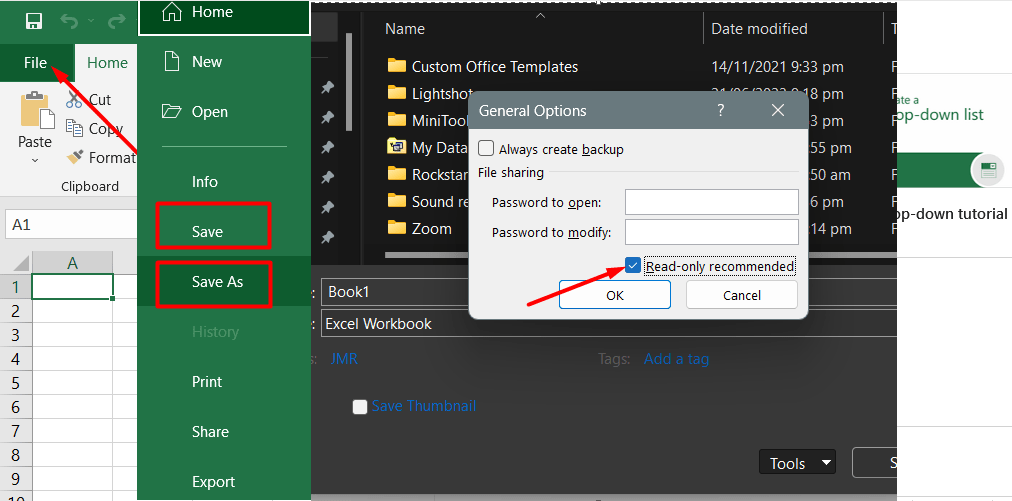
- Open a new blank Excel workbook.
- Copy the entire content from the original corrupt file and paste it into the new workbook.
- Save the new file with a different name or in a different location.
- Close the current Excel session and reopen the new file.
- Try to open the newly saved file. If successful, the “Excel Found Unreadable Content” error should be resolved.
Why it works: Making the file read-only forces Excel to treat it as a non-editable document, which may prevent it from attempting operations that could cause the error. By copying the content into a new file, you’re essentially creating a fresh, intact version of your data.
Fix 3: Try Opening Your File in Excel 2003
If the “Excel Found Unreadable Content” error is caused by compatibility issues between different versions of Excel, you can attempt to open the file in Excel 2003 to convert it into a more compatible format. Here’s how you can do it:
Steps to Open the File in Excel 2003 and Convert It:
- Open the problematic .xls file in Excel 2003.
- Once the file is open, click on the “File” tab in the menu.
- From the dropdown menu, select “Save”.
- In the “Save As” dialog box, choose “Web Page (.html)” as the “Save as type” and click “Save”.
- This action saves the Excel file as an HTML file, which helps bypass compatibility issues.
- Now, open the newly saved .html file in either Excel 2010 or Excel 2007.
- Once the file is open in the newer version of Excel, save it again, but this time in the .xlsx format. Be sure to give it a new name to avoid overwriting the original file.
- The file is now converted and saved in the modern .xlsx format, making it more likely to open without errors.
Why it works: Opening the file in Excel 2003 and saving it as a web page helps resolve potential compatibility issues. When you open the HTML file in Excel 2010/2007 and save it as .xlsx, you’re effectively converting the data into a more stable and accessible format for newer Excel versions.
Fix 4: Move Excel File to a New Folder
If you are encountering the “Excel Found Unreadable Content” error, moving the affected file to a different folder and saving it with a new name may help resolve the issue. This method can eliminate potential folder-specific or file system problems that could be causing the error.
Steps to Move the File:
- Locate the Excel file that is displaying the unreadable content error.
- Right-click on the file and select “Cut” or “Copy”.
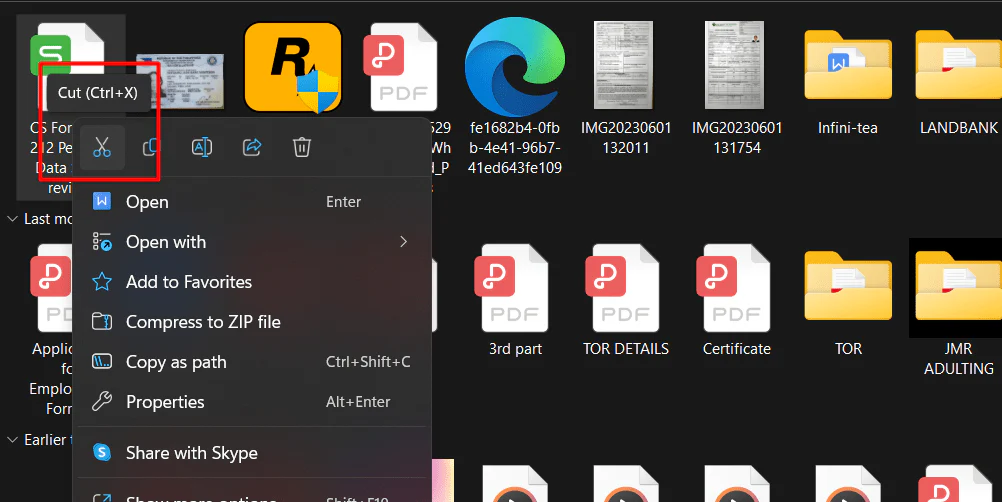
- Navigate to a new folder or create a new one where you want to save the file.
- Right-click within the new folder and select “Paste” to move or copy the Excel file there.
- If you copied the file, attempt to open the copied version of the file in Excel to see if the error is resolved.
- If you moved the file, open Excel, use the “File” tab to browse to the new folder, and try opening the file from there.
- Save the file in the new folder with a new name, if you prefer, to ensure you have a separate version of the file.
Why it works: Moving the file to a different folder can resolve file system or folder-specific issues that might be causing the “Excel Found Unreadable Content” error. Saving the file with a new name also helps avoid overwriting the original file while ensuring you have a fresh copy to work with.
One more thing
If you’re in search of a software company that embodies integrity and upholds honest business practices, your quest ends here at Ecomkeys.com. As a Microsoft Certified Partner, we prioritize the trust and satisfaction of our customers. Our commitment to delivering reliable software products is unwavering, and our dedication to your experience extends far beyond the point of sale. At Ecomkeys.com, we provide a comprehensive 360-degree support system that accompanies you throughout your software journey. Your trust is our foundation, and we’re here to ensure that every interaction with us is a positive and trustworthy one.

